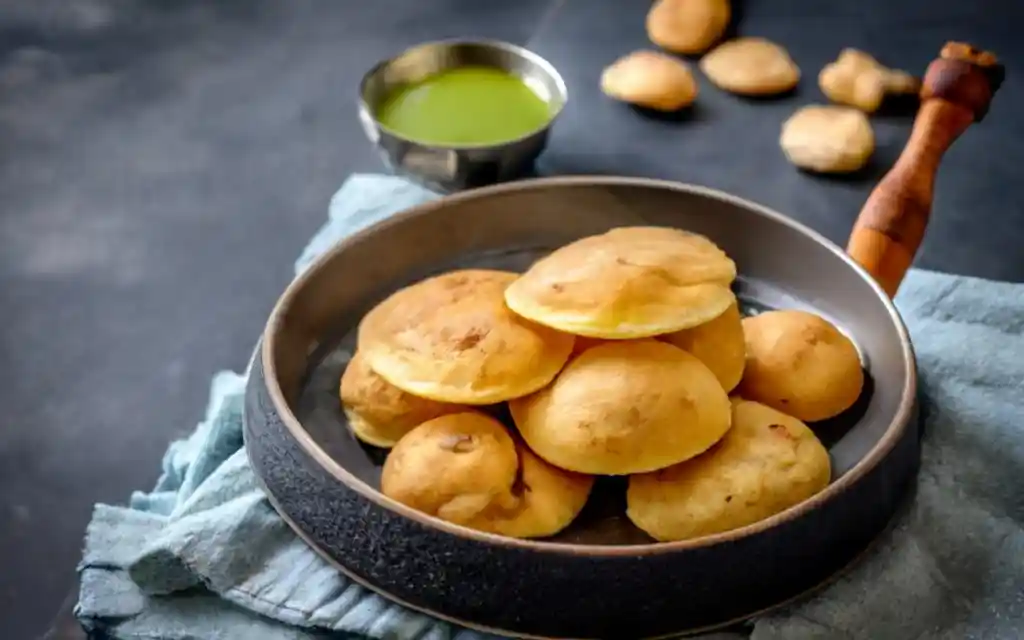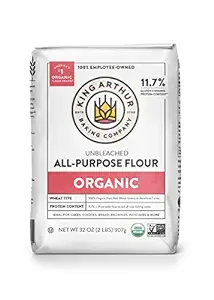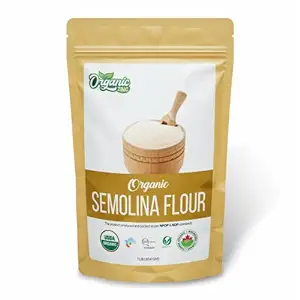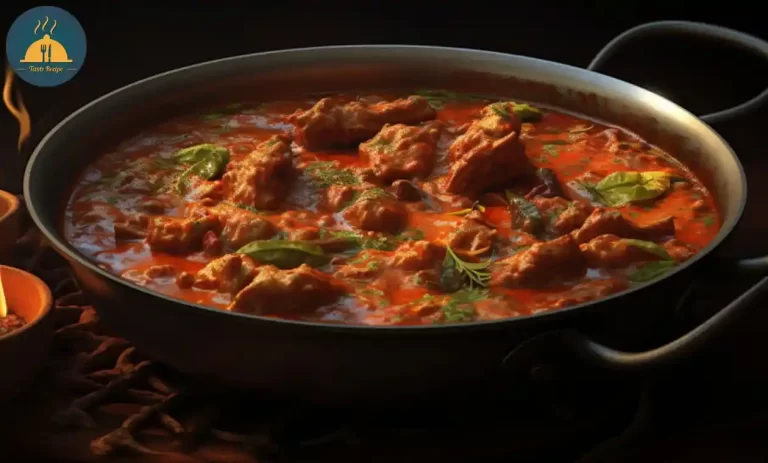Fluffy and Crispy Poori Recipe

Picture this: golden-brown, puffy orbs of deliciousness, crisp on the outside, yet soft on the inside. That’s the magic of poori – a beloved Indian bread that’s a staple at breakfast tables and special occasions alike.
In this blog, we’re diving headfirst into the world of poori, revealing the secrets to making these delectable treats right in your own kitchen. Whether you’re an experienced cook or just starting your culinary journey, our guide will walk you through every step, ensuring your pooris turn out perfect every time.
Poori, also known as “puri” in some regions, has a history as rich as its taste. This iconic Indian bread dates back centuries and has been a part of traditional feasts and celebrations. Its origin can be traced to different parts of the Indian subcontinent, each with its unique variation.
For some, it symbolizes festivity and devotion, while for others, it’s a comforting breakfast choice. Exploring the history and significance of poori not only connects us with our culinary heritage but also allows us to appreciate its cultural importance.
As we embark on this culinary journey, imagine the enticing aroma of hot oil, the satisfying sizzle as the poori hits the pan, and the anticipation of that first heavenly bite.
Whether you’re seeking a classic recipe, a healthier twist, or a unique variation, you’ve come to the right place.
Our aim is to inspire your inner chef, so get ready to roll up your sleeves, because it’s time to create, savor, and enjoy the wonderful world of poori.
Ingredients
Before we embark on our journey to make the perfect poori, let’s gather all the essential ingredients. Here’s what you’ll need:
- All-Purpose Flour (Maida): The foundation of poori, all-purpose flour provides the structure and that delightful flakiness we all love.
- Semolina (Sooji/Rava): Adding semolina to the dough contributes to the signature crispiness of poori.
- Water: For kneading the dough, ensure it’s at room temperature.
- Salt: To enhance the flavor of the dough.
- Oil or Ghee: Used for both kneading and frying, it’s what gives pooris their golden-brown hue and irresistible aroma.
- Baking Soda: This tiny ingredient aids in achieving the puffiness we desire.
Now that we’ve gathered our ingredients and understood their roles, let’s move on to the exciting part – preparing the different styles of poori!
Classic Poori
Classic poori, the beloved Indian bread, is a timeless favorite known for its simplicity and heavenly taste. It’s characterized by its puffy, golden-brown appearance, achieved by frying the unleavened dough until it swells into delightful, crispy bubbles.
The classic poori is a versatile companion to various curries, chutneys, and pickles, making it a staple at breakfast tables, festive gatherings, and celebratory feasts.
Its simplicity lies in its basic ingredients – all-purpose flour, semolina, salt, water, and a touch of oil or ghee, which combine to create a dough that’s rolled into small rounds and deep-fried to perfection.
Ingredients for Classic Poori:
- 1 cup all-purpose flour (maida)
- 1 tablespoon semolina (sooji/rava)
- A pinch of salt
- 1 teaspoon oil or ghee
- Water (as needed)
- Oil (for frying)
Instructions:
- In a mixing bowl, combine the all-purpose flour, semolina, and a pinch of salt.
- Add a teaspoon of oil or ghee to the dry ingredients and mix well.
- Gradually add water and knead the dough until it’s smooth, soft, and slightly firm. The dough should not be too sticky.
- Cover the dough with a damp cloth and let it rest for 15-20 minutes.
- After resting, divide the dough into small, equal-sized balls.
- Heat oil in a deep pan or kadhai over medium-high heat.
- Roll each ball into a small circle using a rolling pin. It should be approximately 4-5 inches in diameter.
- Once the oil is hot, carefully slide a rolled poori into the oil.
- Gently press the poori with a spatula as it puffs up. Fry until it turns golden brown on both sides.
- Remove the poori from the oil and place it on paper towels to remove excess oil.
- Repeat the process with the remaining dough balls.
- Serve hot with your favorite side dish, such as potato curry or chutney.
The history of classic poori is deeply intertwined with the cultural fabric of India. This humble bread has graced dining tables across the subcontinent for centuries. It’s often served during religious festivals, family gatherings, and special occasions.
Classic poori holds cultural significance, symbolizing warmth, togetherness, and celebration. Its preparation varies from region to region, with each area adding its unique touch to this beloved dish.
A typical serving of classic poori, when made using the above recipe, contains approximately 150-200 calories per poori. However, keep in mind that the calorie count may vary based on factors like the size of the poori and the amount of oil absorbed during frying.
The recommended portion size for classic poori is 2-3 per person, depending on individual preferences and dietary considerations.
Whole Wheat Poori
Whole wheat poori offers a wholesome twist on the classic version, prioritizing health without compromising on taste. Unlike traditional pooris made with all-purpose flour, whole wheat poori is crafted from whole wheat flour (atta).
The result is a heartier, nuttier flavor and a slightly denser texture. What truly sets whole wheat poori apart is its commitment to nutrition. It retains the crispy exterior and soft interior of classic poori while infusing the added goodness of whole grains.
Ingredients for Whole Wheat Poori:
- 1 cup whole wheat flour (atta)
- A pinch of salt
- 1 teaspoon oil or ghee
- Water (as needed)
- Oil (for frying)
Instructions:
- In a mixing bowl, combine the whole wheat flour and a pinch of salt.
- Add a teaspoon of oil or ghee to the dry ingredients and mix well.
- Gradually add water and knead the dough until it’s smooth and slightly firm.
- Cover the dough with a damp cloth and let it rest for 15-20 minutes.
- After resting, divide the dough into small, equal-sized balls.
- Heat oil in a deep pan or kadhai over medium-high heat.
- Roll each ball into a small circle using a rolling pin. It should be approximately 4-5 inches in diameter.
- Once the oil is hot, carefully slide a rolled whole wheat poori into the oil.
- Gently press the poori with a spatula as it puffs up. Fry until it turns golden brown on both sides.
- Remove the poori from the oil and place it on paper towels to remove excess oil.
- Repeat the process with the remaining dough balls.
- Serve hot with a healthy side dish, such as mixed vegetable curry or yogurt.
Whole wheat poori offers several health benefits over its traditional counterpart. It’s richer in fiber, vitamins, and minerals due to the use of whole wheat flour. Here are some of its advantages:
- Fiber-Rich: Whole wheat flour is a good source of dietary fiber, promoting digestive health and helping maintain stable blood sugar levels.
- Nutrient Dense: It contains essential nutrients like B vitamins, iron, magnesium, and zinc, contributing to overall well-being.
- Satiety: The higher fiber content in whole wheat keeps you feeling full for longer, aiding in portion control.
- Heart Health: Whole wheat is associated with a reduced risk of heart disease due to its positive impact on cholesterol levels.
A serving of whole wheat poori, prepared as per the above recipe, contains approximately 120-150 calories per poori. Keep in mind that the calorie count may vary based on factors like size and oil absorption.
The recommended portion size for whole wheat poori is 2-3 per person, but you can adjust this according to individual preferences and dietary needs.
Taste Recipe Special Poori
Get ready to savor a culinary delight that’s uniquely ours – the Taste Recipe Special Poori. Our signature version of this classic Indian bread brings together the flavors and traditions of our kitchen to create an unforgettable dining experience.
Ingredients for Taste Recipe Special Poori:
- 1 cup all-purpose flour (maida)
- 1 cup whole wheat flour (atta)
- A pinch of salt
- 2 tablespoons yogurt (curd)
- 1 teaspoon cumin seeds
- 1 teaspoon fennel seeds
- 1 teaspoon crushed coriander seeds
- A handful of fresh coriander leaves, finely chopped
- 1 green chili, finely chopped (adjust to taste)
- 1/2 teaspoon turmeric powder
- 1/2 teaspoon red chili powder (adjust to taste)
- A pinch of asafoetida (hing)
- Water (as needed)
- Oil (for frying)
Instructions:
- In a mixing bowl, combine the all-purpose flour, whole wheat flour, and a pinch of salt.
- Add yogurt, cumin seeds, fennel seeds, crushed coriander seeds, fresh coriander leaves, green chili, turmeric powder, red chili powder, and asafoetida to the dry ingredients.
- Mix everything well to form a crumbly mixture.
- Gradually add water and knead the mixture into a smooth, slightly firm dough.
- Cover the dough with a damp cloth and let it rest for 15-20 minutes.
- After resting, divide the dough into small, equal-sized balls.
- Heat oil in a deep pan or kadhai over medium-high heat.
- Roll each ball into a small circle using a rolling pin. It should be approximately 4-5 inches in diameter.
- Once the oil is hot, carefully slide a rolled special poori into the oil.
- Gently press the poori with a spatula as it puffs up. Fry until it turns golden brown on both sides.
- Remove the special poori from the oil and place it on paper towels to remove excess oil.
- Repeat the process with the remaining dough balls.
- Serve hot with your favorite side dish or chutney.
Our Taste Recipe Special Poori is a harmonious blend of spices and herbs, resulting in a flavor explosion with every bite. It’s perfect for those looking to explore the vibrant and diverse flavors of Indian cuisine in a single, delightful dish.
Our Recommended Ingredients
All-Purpose Flour
All-Purpose Flour is a kitchen essential that serves as the foundation for countless culinary creations. Its versatility makes it perfect for baking a wide range of goods, from fluffy cakes to crispy bread and, of course, the beloved poori.
Semolina
Semolina, also known as sooji or rava, is a coarse wheat flour with a delightful texture. It’s a versatile ingredient used in both sweet and savory dishes, including our special whole wheat poori.
Tips and Recommendations
Mastering the art of making perfect poori requires attention to detail and a few expert tips and techniques. Here’s how you can ensure your pooris turn out flawless every time:
Kneading the Dough:
- Use room temperature water to achieve the right dough consistency.
- Add water gradually while kneading to prevent the dough from becoming too sticky.
Resting Time:
- Allow the dough to rest for at least 15-20 minutes. This relaxes the gluten and makes the dough easier to work with.
Oil or Ghee:
- A small amount of oil or ghee in the dough contributes to the poori’s flakiness.
- Also, use a deep-frying oil with a high smoke point, like vegetable oil.
Rolling Technique:
- Roll the dough into even-sized balls for uniform pooris.
- Roll the pooris neither too thick nor too thin, aiming for about 4-5 inches in diameter.
Frying Temperature:
- Ensure the oil is sufficiently hot before adding the pooris. To test, drop a small piece of dough into the oil; if it sizzles and rises to the surface, the oil is ready.
- Fry the pooris on medium-high heat for that perfect puff.
Puffing Up:
- To help the pooris puff up, gently press them with a spatula while frying.
- Make sure to flip them so both sides turn golden brown.
Elevate your poori experience by exploring various toppings and flavor variations:
Masala Poori:
Add a pinch of garam masala or chaat masala to the dough for an extra kick of flavor.
Methi Poori:
Incorporate dried fenugreek leaves (kasuri methi) into the dough for a fragrant twist.
Stuffed Poori:
Fill the rolled dough with spiced potato or lentil stuffing before frying for a delightful surprise inside.
Sweet Poori:
Make sweet pooris by adding sugar, cardamom, and a hint of saffron to the dough.
Toppings:
Top your pooris with a dollop of yogurt, fresh herbs, or pickles for an added burst of flavor.
Pooris are incredibly versatile and pair well with various side dishes. Here are some serving recommendations:
Traditional Accompaniments:
Enjoy pooris with classic sides like potato curry (aloo ki sabzi), chana masala, or dahi (yogurt).
Chutneys and Pickles:
Elevate the taste with mint-coriander chutney, tamarind chutney, or a spicy mango pickle.
Raita:
Cool down the flavors with cucumber or tomato raita.
Breakfast Buffet:
Serve pooris as part of a lavish breakfast spread with scrambled eggs, fruits, and a variety of beverages.
Fusion Flavors:
Get creative by pairing pooris with non-traditional sides like hummus, guacamole, or salsa for a fusion twist.
Remember, the beauty of pooris lies in their ability to adapt to various cuisines and preferences, so don’t hesitate to experiment and discover your favorite combinations.
In Crux
In this flavorful journey through the world of poori, we’ve explored the classic, the wholesome, and our very own Taste Recipe Special Poori. Here’s a quick recap of what we’ve covered:
- Classic Poori: We started with the timeless classic, crispy on the outside and soft inside, made from all-purpose flour and perfect for any occasion.
- Whole Wheat Poori: We then ventured into a healthier option, the whole wheat poori, with the goodness of whole grains without sacrificing the delightful taste.
- Taste Recipe Special Poori: Finally, we introduced our signature creation, the Taste Recipe Special Poori, bursting with a unique blend of spices and herbs.
Now, it’s your turn to embark on this culinary adventure. We encourage you to roll up your sleeves, gather your ingredients, and create your version of perfect poori. Whether you choose the classic, whole wheat, or our special recipe, we’re certain that the aroma and taste will delight your senses.
Cooking is not just about following a recipe; it’s about infusing your personal touch and creativity into each dish. Feel free to experiment, add your favorite spices, and make these pooris truly yours. Share your cooking journey with us, and don’t forget to tag us on social media with your mouthwatering creations. We’d love to hear about your experiences and see your delicious plates.
Thank you for joining us on this culinary voyage, and we can’t wait to see you back here for more exciting recipes, cooking tips, and culinary adventures.
Happy cooking and bon appétit!
FAQs about Poori
Can I make whole wheat poori without using all-purpose flour?
Absolutely! Whole wheat poori can be made solely with whole wheat flour (atta). The addition of semolina or all-purpose flour is common in traditional poori recipes to enhance puffiness, but you can create delicious and healthier whole wheat pooris by using whole wheat flour alone.
What can I serve with poori?
Poori pairs wonderfully with a variety of side dishes. Traditional options include potato curry (aloo ki sabzi), chana masala, or yogurt (dahi). You can also get creative and serve poori with chutneys, pickles, or even non-traditional sides like hummus or guacamole.
How do I keep poori from becoming too oily?
To prevent pooris from becoming excessively oily, ensure that the oil is hot enough before frying. Also, avoid using too much oil when rolling the dough. Gently press the pooris with a spatula while frying to encourage puffing, and drain them on paper towels after frying to remove excess oil.
Can I make poori in advance and reheat them?
While it's best to enjoy pooris fresh, you can make them in advance and reheat them in an oven or toaster oven to regain their crispiness. Place them on a baking sheet and warm them at a low temperature until they're hot and crispy again.
Can I freeze poori dough for later use?
Yes, you can freeze poori dough for later use. Divide the dough into individual portions, wrap them tightly in plastic wrap or aluminum foil, and store them in a freezer-safe container or bag. Thaw the dough in the refrigerator before using.
What can I do with leftover poori dough?
Leftover poori dough can be used to make various snacks like masala puri or sev puri. You can also roll it out and make stuffed parathas or even use it to make a quick pizza base with your favorite toppings.
Are pooris gluten-free?
No, traditional pooris are not gluten-free as they are made from wheat-based flours like all-purpose flour or whole wheat flour. However, you can explore gluten-free flours like chickpea flour (besan) or rice flour to make gluten-free versions of pooris.
Can I make sweet pooris with this recipe?
Certainly! You can make sweet pooris by adding sugar, cardamom, saffron, or other sweet spices to the dough. Sweet pooris are a delightful treat often enjoyed during festivals and special occasions.
Can I use an air fryer to make poori?
While an air fryer is a healthier alternative to deep-frying, it may not yield the same results as traditional frying. Pooris may not puff up as much in an air fryer, but you can experiment with it by spraying the pooris with a little oil and cooking them at a high temperature for a shorter time.









